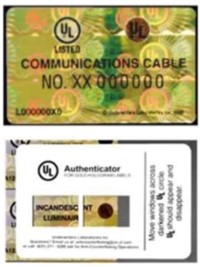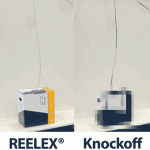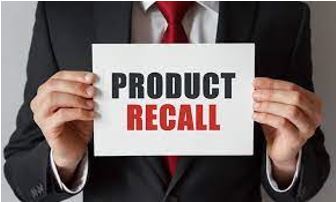Counterfeiting and Non-Compliance
Those who design, install and use structured cabling systems have a right to expect uncompromised quality, performance and safety. Counterfeit or non-compliant cable and connectivity products are eroding that right and present a formidable challenge.
CCCA’s Role in Fighting Counterfeit and Non-Compliant Products
CCCA leads the fight to confront counterfeit and non-compliant ICT products. Through testing programs, educational initiatives and screening tools, CCCA alerts and educates the industry on the dangers of counterfeit cable and, more importantly, how to avoid being misled by deceptive labels and marketing practices. CCCA’s anti-counterfeiting efforts include close collaboration with independent testing agencies, U.S. Customs and law enforcement.
Non-Compliant vs. Counterfeit – What’s the Difference?
Non-Compliant Cables
If a cable bears no certification mark but is marketed and advertised as meeting applicable codes and standards specifications (e.g. Category XX or CM, CMR, CMP fire safety rating), then the cable may be correctly described as “NON-COMPLIANT”.
Counterfeit Cables
If a cable or product falsely bears a name or brand that is descriptive of the product that was not produced by that manufacturer, then the cable may be described as “COUNTERFEIT”. For example, a Rolex watch not made by Rolex, but by a manufacturer not authorized to use the Rolex name or mark, which are property rights belonging to Rolex.
If a cable bears an unauthorized certification mark (e.g. UL or ETL), then the cable is counterfeit as to the mark. The cable may be described as “BEARING COUNTERFEIT CERTIFICATION” or “COUNTERFEIT MARK”.
How to Identify Counterfeit and Non-Compliant Cables
Why You Need to Know
There is a huge amount of non-compliant, counterfeit and underperforming cable currently being sold on the market. While majority of this cable is being sold via online distributors, ultimately it is the purchaser and installer that bears the responsibility for the product.
Thus, anyone who uses structured cabling must be aware of what they are installing, aware of the risks of using “bad” cable, and understand how they could be liable if something goes wrong.
Non-compliant and substandard cabling poses a health and safety risk in today’s increasingly digital society.

Use CCCA CableCheck App

CCCA CableCheck™ App
A Convenient Field Screening Tool for Checking Suspicious Cable
Helps identify and avoid non-compliant and counterfeit communications cable
- Screen 4-pair UTP communications cable for compliance to National Electrical Code (NEC) requirements for fire safety
- Validate Certification in UL Product iQ™ database
- Link to ETL website to check ETL Listing
- Learn what to look for to spot non-compliant cable with the 7 Quick Tips
- Learn the danger of non-compliant or counterfeit cable by viewing CCCA’s Cable Burn Test video
Available FREE for iPhone, iPad and Android Devices
Click on the logos to link to CCCA’s CableCheck in the App Store or Google Play
Or download from your device right away using the appropriate QR Code
Developed in cooperation with Underwriters Laboratory (UL) and U.S. Customs & Homeland Security
For designers, installers, inspectors and end-users of UTP communications cables
Topic Resources
CCCA Provides the industry with a wide variety of resources to educate and inform. From videos to articles to white papers, we encourage everyone interacting with cable and connectivity to refer to these resources when making buying or installation decisions.
Articles and Resources
Impact of Copper Clad Aluminum Conductors Within Balanced Pair Cables
This paper by the Fiberoptic Industry Association (FIA) reviews the implications of using low cost imported products that claim to be “Category 5” or “Category 5e” using Copper Clad Aluminium (CCA) conductors. This document supports many others prepared by [...]
Risk, Responsibility and Reputation: What You Need to Know about Non-Compliant Cable
Risk, Responsibility and Reputation: What You Need to Know about Non-Compliant Cable CCCA addresses the safety, performance and liability risks associated with compliance. In recent years, the industry has heard a lot of buzz sur- rounding the risks [...]
Counterfeit Communications Cable Fire Test Video
CCCA conducted fire tests at Underwriters Laboratories (UL), comparing counterfeit communications cable to compliant cable. This video briefly introduces the problem of counterfeit cable and shows the actual fire test and the spectacular results. View the other [...]
The Dangers of Cutting Corners
The availability and use of copper clad aluminium (CCA) cable is continuing cause for concern. Inside Networks has assembled panel of industry experts to explain whether we are any closer to winning the war against CCA and suggests ways to [...]
Case Study: Learning from an Encounter with Counterfeit Cable
Case Study Learning from an Encounter with Counterfeit Cable Over the past six years, one computer educator and IT coordinator for a small K-8 elementary school, had been pushing for the school to upgrade its aging category 5 cabling [...]
Non-Compliant and Counterfeit Cable: A Risk Too Real to Ignore
In recent years, the industry has heard a good deal of discussion about noncompliant and counterfeit communications cable used for in-building information and communications technology (JCT) infrastructures that support network, security and building automation systems. Much of this has been [...]
Advisory on Legislative Actions Affecting Contractors for Low Voltage Circuits & Equipment
ADVISORY State Legislative Initiatives to Restrict Low-Voltage Contractors and Integrators From Installing Equipment, Cabling and Infrastructure CCCA is aware of legislative initiatives taking place in multiple States and Jurisdictions that would modify or limit licensed and certified Low-Voltage Contractors [...]
Home Depot Recalls 11 Million Feet of CE Tech Riser Cable Due to Fire Hazard
The Consumer Protection Safety Commission (CPSC) recommends that consumers should stop using this product, which is being recalled voluntarily. It is illegal to resell or attempt to resell a recalled consumer product. Recalls Home Depot Recalls CE Tech Riser Cable [...]


















